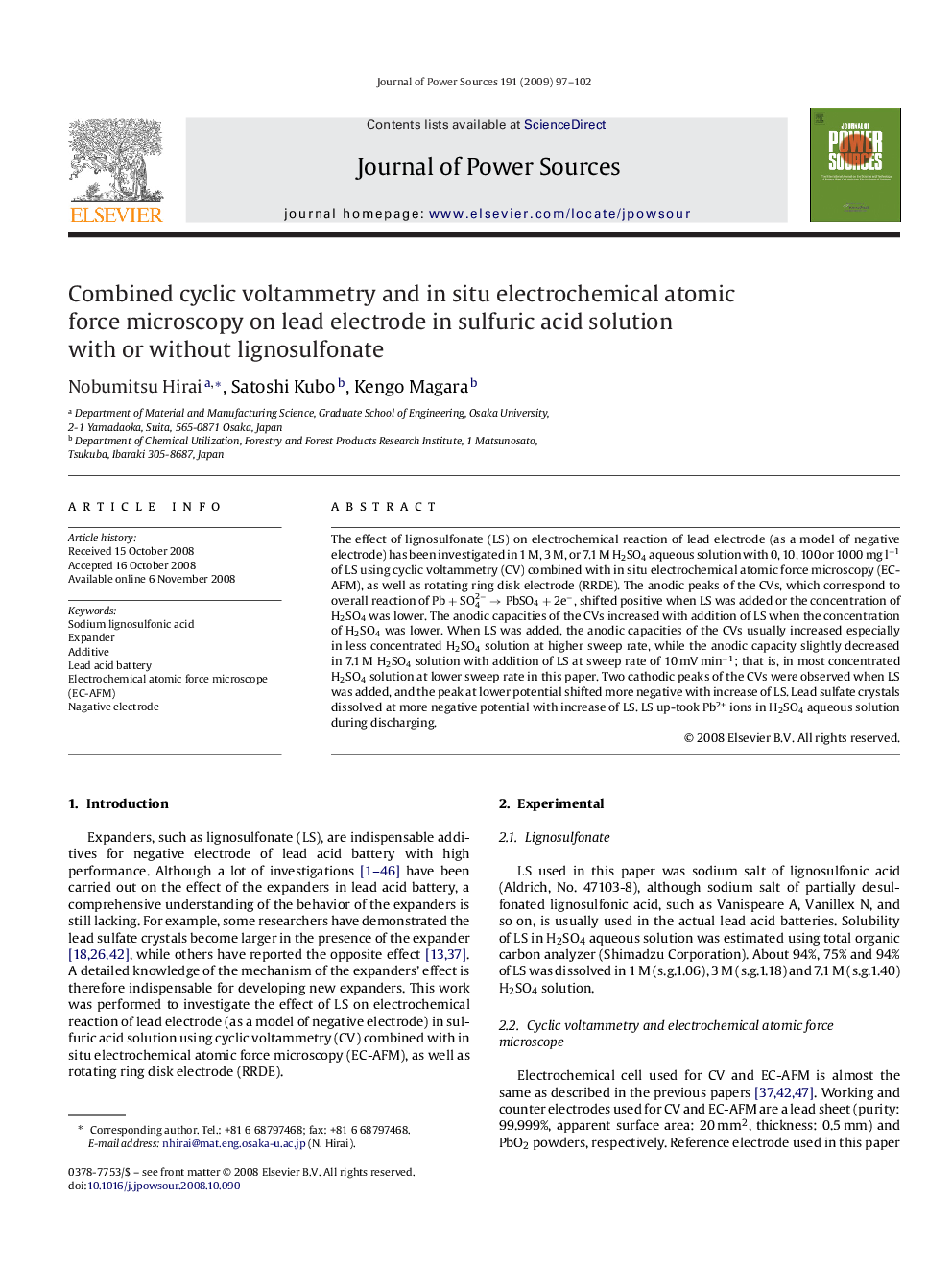| Article ID | Journal | Published Year | Pages | File Type |
|---|---|---|---|---|
| 1290687 | Journal of Power Sources | 2009 | 6 Pages |
The effect of lignosulfonate (LS) on electrochemical reaction of lead electrode (as a model of negative electrode) has been investigated in 1 M, 3 M, or 7.1 M H2SO4 aqueous solution with 0, 10, 100 or 1000 mg l−1 of LS using cyclic voltammetry (CV) combined with in situ electrochemical atomic force microscopy (EC-AFM), as well as rotating ring disk electrode (RRDE). The anodic peaks of the CVs, which correspond to overall reaction of Pb+SO42−→PbSO4+2e−, shifted positive when LS was added or the concentration of H2SO4 was lower. The anodic capacities of the CVs increased with addition of LS when the concentration of H2SO4 was lower. When LS was added, the anodic capacities of the CVs usually increased especially in less concentrated H2SO4 solution at higher sweep rate, while the anodic capacity slightly decreased in 7.1 M H2SO4 solution with addition of LS at sweep rate of 10 mV min−1; that is, in most concentrated H2SO4 solution at lower sweep rate in this paper. Two cathodic peaks of the CVs were observed when LS was added, and the peak at lower potential shifted more negative with increase of LS. Lead sulfate crystals dissolved at more negative potential with increase of LS. LS up-took Pb2+ ions in H2SO4 aqueous solution during discharging.
